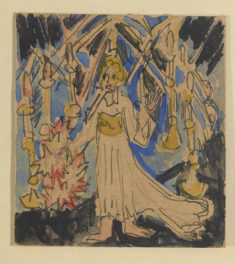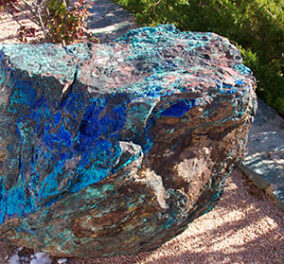
Beehive in a Floral Wreath (detail), 1730, Maria Sibylla Merian. The Getty Research Institute, 89-B10813
Maria Sibylla Merian (1647–1717) was a woman far ahead of her time: a skilled, meticulous artist in an era when few women could participate in this profession; a self-taught entomologist, botanist, and ecologist before these fields were named or defined; a divorcée who raised two daughters largely on her own in a deeply religious society; an entrepreneur who supported her family through her publications and trade in the exotic specimens she studied; and a traveler who, at age 52, undertook the first-ever transatlantic journey for purely scientific purposes.

Portrait of Maria Sibylla Merian, 1813, Max Franck. Source: Deutsche Nationalbibliothek. Image licensed under a Creative Commons Attribution-NonCommercial-ShareAlike 4.0 International license (CC BY-NC-SA 4.0)
Merian’s impressive paintings, scientific studies, and story inspired author Sarah Pomeroy to chronicle her life and work in a book for middle-grade readers, Maria Sibylla Merian: Artist, Scientist, Adventurer, published by Getty Publications and recently awarded a 2018 Moonbeam Children’s Book Award Gold Medal.
The volume traces the unique life of a woman whose legacy endures to this day.
A Unique Life
Born in the mid-seventeenth century, Merian had the rare opportunity to access a wide range of books and learn about art. Her father, Matthäus Merian the Elder, who died when she was three, was a publisher and artist, and her stepfather, Jacob Marrel, was an artist who also taught art.
The seventeenth century was a time of renewed scientific questioning, and new tools like the magnifying glass allowed closer observation of the natural world than ever before. Merian embodied this spirit of discovery. She was only 13 when she began to seriously watch and record the life cycle of insects and the plants they feed on.
Throughout her life, Merian was also unusually business-minded. As a young married woman with two daughters, Merian sold hand-mixed paints and painted linens. She also taught painting and embroidery to young women.
After she divorced her husband, she moved to a religious community and later relocated to Amsterdam. In Amsterdam, women were allowed to own property and businesses—a rare privilege at the time—and Merian and her two daughters started a painting studio and sold prints as well as unusual plants and insects.

As a teaching tool, Merian created a book of flower paintings for her students and others to use as patterns for embroidery or drawings. Anemone from The New Book of Flowers, 1680, Maria Sibylla Merian. Natural History Museum, London, UK / Bridgeman Images
In 1699, at age 52, Merian and her daughter Dorothea set sail for Surinam, where they encountered, observed, and recorded many new plants, insects, and animals. Most of these species had never been seen in Europe before.
The two women returned to Amsterdam two years later, bringing preserved birds, reptiles, plants, eggs, and insects back with them, along with a few living caterpillars. In 1705, Merian published her book on the plants and insects she found in Surinam. She continued painting, publishing, and trading specimens until her death in 1717.
A New Book for a New Audience
The author of Maria Sibylla Merian, Sarah Pomeroy, is Distinguished Professor of Classics and History, Emerita, at the City University of New York, and no stranger to publishing. She has written many fascinating scholarly books on women in history. But for this book, Pomeroy had something slightly different in mind: her grandchildren.

2018 Moonbeam Children’s Book Award Gold Medal winner Maria Sibylla Merian: Artist, Scientist, Adventurer (Getty Publications, 2018)
Pomeroy first saw Merian’s drawings as a fellow at Oxford in 1996. When she began thinking about writing a book for her grandchildren, Merian became the clear choice. Pomeroy sees Merian as a great role model for young adults, noting, “Maria Sibylla Merian was not inhibited by convention. She was her own original creation and a pioneer in her time. At a young age, Merian chose the path of her unique trajectory in life and never wavered from it.”
Engaging an Entomologist
Pomeroy worked with Oxford entomologist Jeyaraney (Jeya) Kathirithamby to ensure that the book is as firmly grounded in science as it is art and history. Merian worked at a time before scientists understood where insects come from and how they metamorphose—a common belief was that they spontaneously appeared out of dirt and garbage. Few of the creatures she studied even had names. Nonetheless, the accuracy of her paintings enables us to match many of the species she recorded to their current scientific names.

Merian’s works are so accurate that some scientists believe that a hummingbird (seen bottom right) in one of her drawings from Surinam records a now-extinct species. Guava Tree with Huntsman Spider, Orb Weaver Spider, Leaf-Cutter Ants, Army Ants, Cockroach, Tarantulas, and Hummingbird from The Insects of Surinam, second edition, 1719, Maria Sibylla Merian. The Getty Research Institute, 89-B10750
Kathirithamby identified and described most of the insects, animals, and plants that Merian illustrated. She also created detailed captions that explain how the many different species behave or interact with their environments.
Like Merian, Kathirithamby was fascinated by insects at a young age; she watched ants and grasshoppers for hours as a child. Also like Merian, she turned her childhood fascination into a career studying insects. The field of entomology—the study of insects—has changed a lot since the seventeenth century, and today’s scientists usually record specimens with photographs rather than by drawing them.
Kathirithamby appreciates how patiently and closely Merian had to observe her specimens to draw them in such detail, remarking, “Drawing takes time. Photography is simpler. It takes less patience; you’re not observing as closely.”
Merian’s Scientific Legacy
Merian’s contributions to science are wide-reaching. Her detailed paintings, drawn from careful observation, recorded many new and occasionally bizarre creatures. For instance, Merian noticed that sometimes wasps emerged from the cocoon of a caterpillar that would normally turn into a moth or butterfly. She was one of the first people to record parasitic wasps!
Merian’s research and paintings not only advanced our understanding of the natural world but also influenced the study of life on Earth. Carl Linnaeus, the scientist credited with developing the taxonomic structure—the system by which plants and animals are categorized—used many of Merian’s drawings and descriptions to name species he had never seen.
Thirty years after her death, he developed the system we still use today. Because Linnaeus’s structure includes the name of the person who discovered the specimen after the scientific name, the names of many plants and animals reference Merian.

The Split-Banded Owlet Butterfly—or Opsiphanes cassina merianae—is one of the species whose scientific name honors Merian. Coffee Senna with Split-Banded Owlet Butterfly from The Insects of Surinam, second edition, 1719, Maria Sibylla Merian. The Getty Research Institute, 89-B10750
Although Merian’s work was largely forgotten by the nineteenth century, the Soviet Academy of Sciences republished her paintings in the mid-1970s. This institution had held Merian’s study book and nearly 300 of her watercolors since shortly after her death, when Czar Peter the Great bought them from her daughter. The 1970s publication sparked new interest in Merian’s achievements.
In the decades since, Merian has appeared on currency, postage stamps, and in several scholarly publications and museum exhibitions, including Maria Sibylla Merian & Daughters: Women of Art and Science at the Getty Museum in 2008. But there is still much to learn about this fascinating artist-scientist. As Kathirithamby says, “As an entomologist, I thought I was pretty familiar with Maria Sibylla Merian. I was wrong! There was so much more to her story.” And Pomeroy hopes this new book will “inspire readers to think about creativity: Merian’s and their own.”
_____
Browse or download digitized versions of two of Merian’s books online (original titles translated and shortened here):
The Caterpillar Book (European Insects) (1730)
The Insects of Surinam (1719)




What an incredible person! Thanks for this great post.